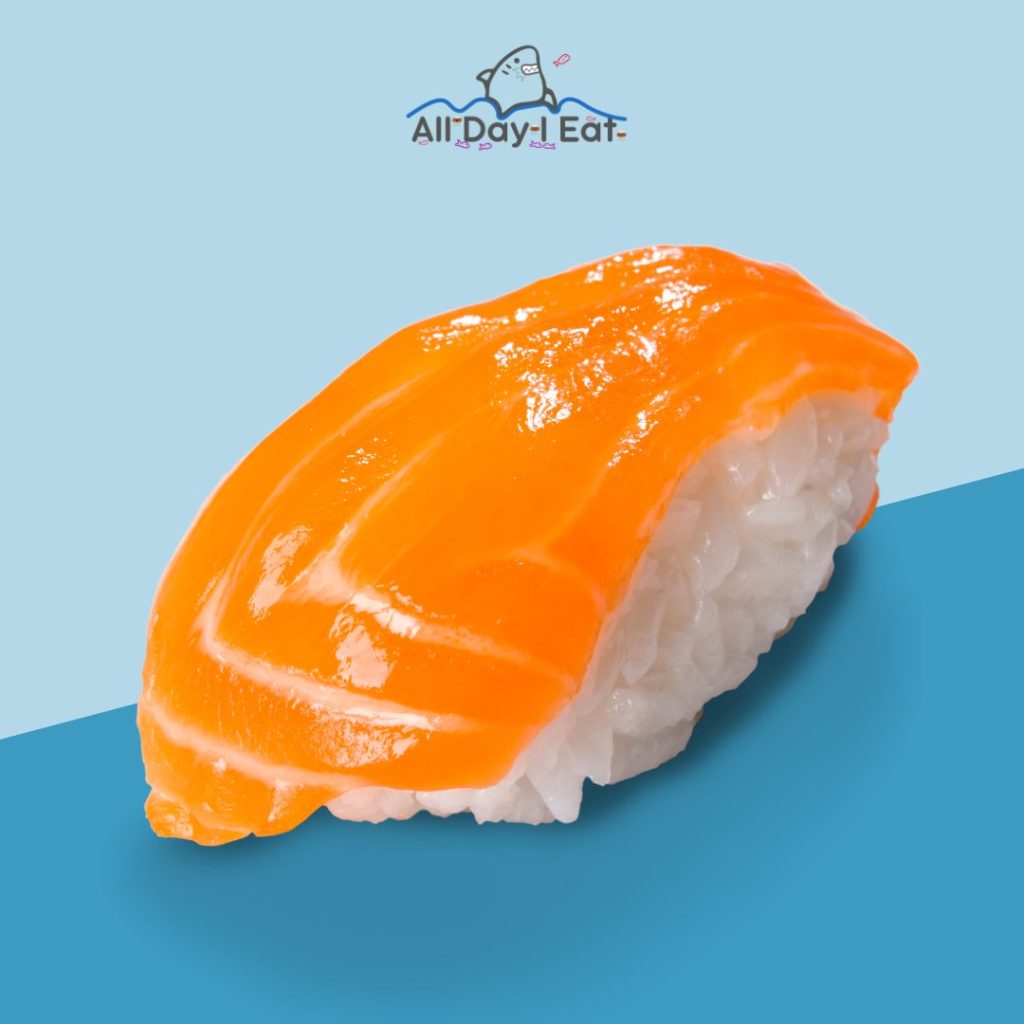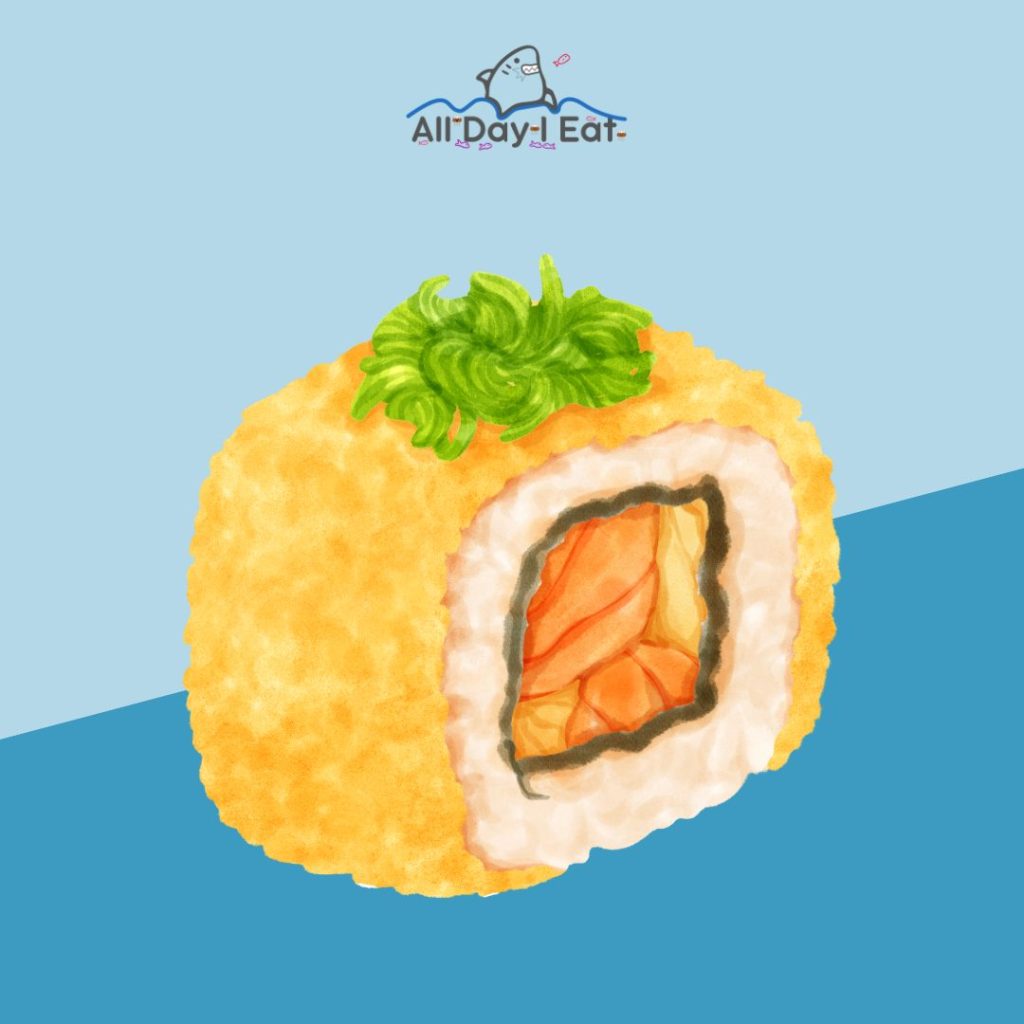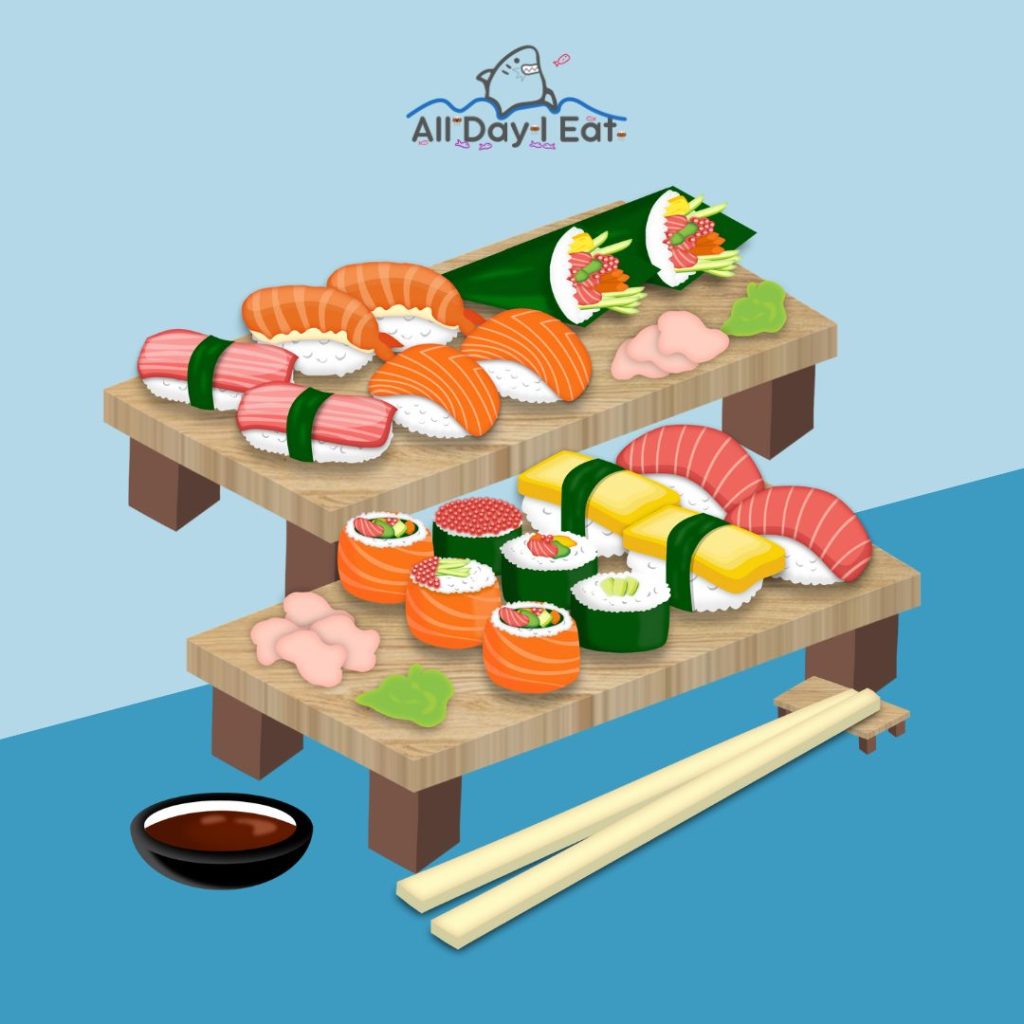Sushi is a popular Japanese dish that has gained popularity worldwide. It is often perceived as a healthy option because it uses raw fish and vegetables. However, a common misconception is that sushi is only made with seafood. In this article, we will answer the question, “Is sushi a seafood dish?”
Understanding sushi is crucial to answering this question. Sushi is a dish that consists of vinegared rice, known as shari, combined with other ingredients such as raw fish, vegetables, and sometimes fruits. The ingredients are then rolled in seaweed or served as individual pieces. While seafood is a popular ingredient in sushi, it is not the only ingredient used.
Key Takeaways
- Sushi is a dish that consists of vinegared rice and other ingredients such as raw fish, vegetables, and sometimes fruits.
- While seafood is a popular ingredient in sushi, it is not the only ingredient used.
- Sushi can be a healthy option, but it is essential to consider the ingredients and health considerations, such as mercury levels in seafood.
Understanding Sushi

Sushi is a traditional Japanese dish that has been enjoyed for centuries. It combines vinegared rice, often mixed with sugar and salt, and various toppings, including seafood, vegetables, and meat. The dish has become increasingly popular worldwide, with many variations and adaptations to suit different tastes and cultures.
Origins in Japan
Sushi originated in Japan in the 8th century and was initially a way of preserving fish by fermenting it with rice. The dish evolved, and by the 19th century, sushi had become a popular street food in Tokyo. Hanaya Yohei, a famous Japanese chef, is credited with inventing nigiri sushi, a type of sushi consisting of a small ball of rice topped with a slice of fish or other seafood.
Tradition and Variations
Sushi is deeply rooted in Japanese tradition, and the preparation of the dish is considered an art form. There are many different types of sushi, including maki sushi, rolled sushi, and temaki sushi, hand-rolled sushi. In addition to seafood, sushi can also be made with vegetables, meat, and egg.
In recent years, sushi has become popular worldwide, and many restaurants offer variations of the dish. Some popular adaptations include California rolls, made with avocado and crab meat, and spicy tuna rolls, made with raw tuna and spicy mayo.
Sushi-Grade Definition
When it comes to seafood used in sushi, it is essential to use high-quality, fresh fish that is safe to eat raw. Sushi-grade fish is a term used to describe fish that has been handled and stored in a specific way to ensure its safety and quality. Any government agency does not regulate the term, but most sushi restaurants follow strict guidelines when selecting and preparing their fish.
Ingredients of Sushi

Sushi is a traditional Japanese dish that has become popular worldwide. It is a dish made with vinegared rice and other ingredients, including rice, seafood, vegetables, and condiments.
Rice in Sushi
The essential ingredient in sushi is the rice. Sushi rice, also known as shari or sumeshi, is short-grain rice cooked with vinegar, sugar, and salt. The vinegar gives the rice a tangy flavor, which pairs well with the other ingredients in sushi. The rice is typically cooked in a rice cooker and then cooled before being used in sushi.
Seafood in Sushi
Seafood is a common ingredient in sushi, although not all sushi contains raw fish. Some of the most popular types of seafood used in sushi include tuna, salmon, shrimp, and eel. The seafood can be served raw, cooked, or marinated in vinegar. Sashimi is a type of sushi made entirely with raw seafood, while nigiri sushi is a hand-formed oblong of rice topped with sliced raw seafood.
Vegetables and Fruits in Sushi
Vegetables and fruits are also common ingredients in sushi. Some of the most popular vegetables used in sushi include cucumber, avocado, and pickled vegetables. Fruits such as mango and pineapple can also be used in sushi rolls. These ingredients add a refreshing crunch and sweetness to the dish.
Condiments and Extras
Condiments and extras are an essential part of sushi. Soy sauce is often served with sushi to add saltiness and umami flavor. Wasabi, a green paste made from horseradish, is often served with sushi to add a spicy kick. Pickled ginger is also served with sushi to cleanse the palate between bites. Other popular condiments and extras include cream cheese, spicy mayo, and sesame seeds.
Popular Types of Sushi

Sushi is a Japanese dish that has become popular all over the world. It is typically made with rice, seaweed, and various types of seafood. However, there are also vegetarian and vegan options available. In this section, we will explore the most popular types of sushi.
Nigiri
Nigiri is a type of sushi consisting of an oblong ball of sushi rice typically topped with wasabi and a slice of raw fish. Nigiri, which is popular in Tokyo, can include raw fish, cooked shrimp (ebi), squid (ika), and eel (unagi). It is often served with soy sauce and pickled ginger to balance the flavors.
Maki
Maki refers to sushi rolls with seafood, veggies, sushi rice, and other accompaniments. The most popular type of maki is the California roll, which contains crab meat, avocado, and cucumber. Different popular types of maki include the dragon roll, which contains tempura shrimp and avocado, and the spicy tuna roll, which has raw tuna and spicy mayo.
Sashimi
Sashimi is a type of sushi that consists of thinly sliced raw fish or meat served without rice. It is typically served with wasabi and soy sauce. Some popular kinds of sashimi include salmon, tuna, yellowtail, and octopus.
Temaki
Temaki is a type of sushi that is hand-rolled into a cone shape. It is typically filled with sushi rice, raw fish, and vegetables. Temaki is often served as an appetizer or snack and is a popular choice for sushi lovers who prefer a more casual dining experience.
In conclusion, sushi is a versatile dish that offers a wide variety of flavors and textures. Whether you prefer nigiri, maki, sashimi, or temaki, there is a type of sushi that will suit your taste buds.
Seafood in Sushi

Many people wonder if sushi is considered seafood or not. If you are one of those people, the answer is yes! Sushi is a seafood dish, but not all sushi contains raw fish. Let’s dive into the details of seafood in sushi.
Common Seafood Used
The extensive variety of seafood used in sushi includes salmon, tuna, shrimp, uni, clams, yellowtail, freshwater fish like trout, eel, scallop, clam, scallops, squid, mackerel, crab, bluefin, bonito, abalone, hamachi, flounder, swordfish, octopus, sea urchin, sea bass, blue marlin, ark shell, sea bream, flatfish, and smoked salmon. These seafood options are often served raw in sushi, but some are also cooked.
Freshness and Quality
The quality and freshness of the seafood used in sushi are crucial to its taste and safety. Sushi chefs prioritize using fresh, high-quality seafood to ensure the best flavor and texture. The seafood must also be handled and prepared correctly to prevent foodborne illnesses.
Cooked vs. Raw Seafood
Not all sushi contains raw seafood. Some sushi options, such as shrimp tempura rolls, use cooked seafood. Cooked seafood is often used in sushi to cater to those who prefer cooked food or to balance out the flavors and textures of the sushi. However, raw fish is a common and traditional ingredient in sushi, and many sushi enthusiasts prefer it for its unique taste and texture.
In conclusion, sushi is a seafood dish that often contains a variety of raw and cooked seafood. The quality and freshness of the seafood used in sushi are crucial to its taste and safety. Whether you prefer raw or cooked seafood in your sushi, there are plenty of options.
Health Considerations

When it comes to consuming sushi, you must remember some essential health considerations. In this section, we will cover the risks associated with parasites and bacteria, as well as the specific concerns for pregnant women and children.
Parasites and Bacteria
One of the biggest concerns with consuming raw fish, including sushi, is the risk of parasites and bacteria. Some common parasites in raw fish include tapeworms, roundworms, and flukes. These parasites can cause various symptoms, including abdominal pain, nausea, and diarrhea.
To reduce the risk of parasites and bacteria, choosing high-quality sushi from a reputable source is crucial. Additionally, pregnant women, children, and individuals with weakened immune systems should avoid consuming raw fish.
Pregnancy and Sushi
Pregnant women should be cautious when consuming sushi due to the risk of foodborne illness. Raw fish can contain harmful bacteria and parasites that can cause infections like listeriosis, which can be dangerous for both the mother and the baby.
Pregnant women should avoid consuming raw fish and opt for cooked options to reduce the risk of foodborne illness. Additionally, it is vital to choose sushi from a reputable source and to ensure that it is prepared and stored correctly.
Children and Sushi
While sushi can be a healthy and nutritious food for adults, you must be cautious when serving it to children. Raw fish can be a choking hazard for young children, and the risk of foodborne illness is higher in children with developing immune systems.
To reduce the risk of choking, cut the sushi into small, bite-sized pieces before serving it to children. Again, choose sushi from a reputable source to ensure it is prepared and stored correctly. Finally, it is best to introduce sushi to children in small amounts and to monitor them closely for any adverse reactions.
Sushi Around the World

Sushi is a popular Japanese dish that has gained worldwide recognition and has been adapted to different cultures, with other countries putting their spin on the traditional Japanese dish. From traditional nigiri to creative rolls, sushi has become a staple in many countries.
While sushi in the United States may differ from sushi in Japan, it still offers a delicious and unique dining experience.
Sushi in the United States
Sushi has become trendy in the United States, with sushi restaurants nationwide. While traditional sushi is made with raw fish, American sushi often includes cooked ingredients and fusion flavors. Some famous American sushi rolls have the California roll, which features crab meat, avocado, and cucumber, and the spicy tuna roll, which includes chopped raw tuna and spicy mayo.
Sushi restaurants in the United States often serve a variety of sushi options, including vegetarian and vegan sushi rolls. These rolls often include ingredients like avocado, cucumber, and sweet potato. Some sushi restaurants also offer all-you-can-eat options, which can be an excellent value for sushi lovers.

Konnichiwa! (Hello!) I'm Pat Tokuyama, a Japanese tofu cookbook author, who travels for music, food, and adventure. If you like Japanese tea, checkout some of the newestorganic japanese tea, matcha bowls and noren and more!
** Curious about the Plant Based Japanese Cooking Club? ** Learn more here!
Farmed Fish in Sushi
The availability of fresh, sustainably caught fish can be limited, leading some sushi restaurants to use farmed fish in their sushi. While farmed fish may not be as environmentally friendly as wild-caught fish, it can be a more reliable source of fish for sushi restaurants.
Farmed fish can also be used to make sushi more affordable for consumers. However, not all farmed fish is created equal. Some farms use unsustainable practices that can harm the environment and the fish. Therefore, research the source of the fish before consuming sushi made with farmed fish.
When it comes to sushi made with farmed fish, you must be aware of the source of the fish and choose sustainable options whenever possible.
Conclusion
Sushi is a dish made with various ingredients, including vinegared rice, seafood, vegetables, and condiments. While raw fish is a common ingredient in sushi, not all contain seafood. Sushi is a versatile dish that can be customized to suit individual tastes and preferences.








Konnichiwa! (Hello!) I'm Pat Tokuyama, a Japanese tofu cookbook author, who travels for music, food, and adventure. If you like Japanese tea, checkout some of the newestorganic japanese tea, matcha bowls and noren and more!
** Curious about the Plant Based Japanese Cooking Club? ** Learn more here!